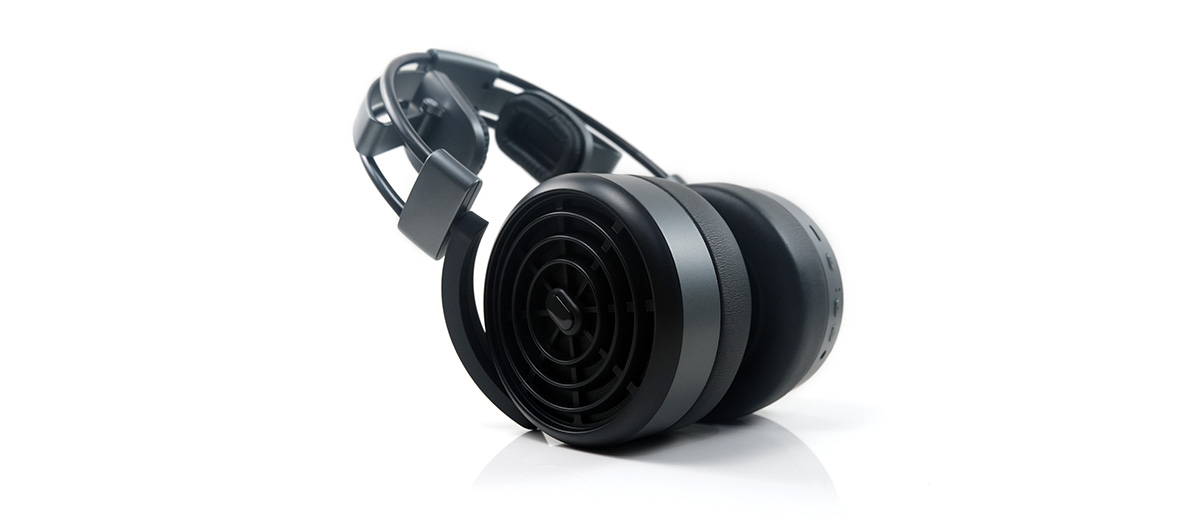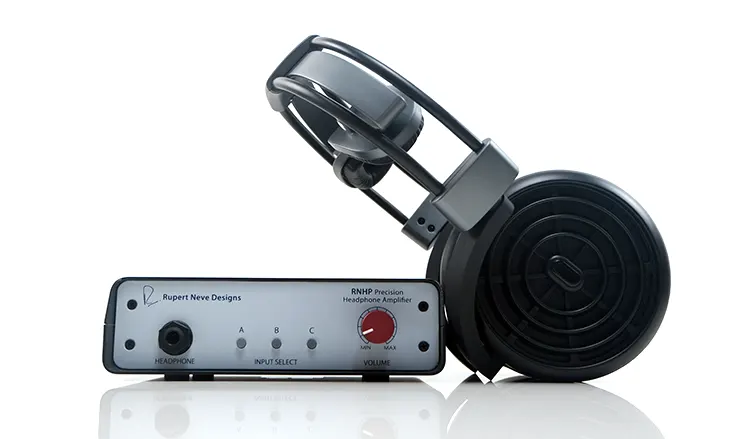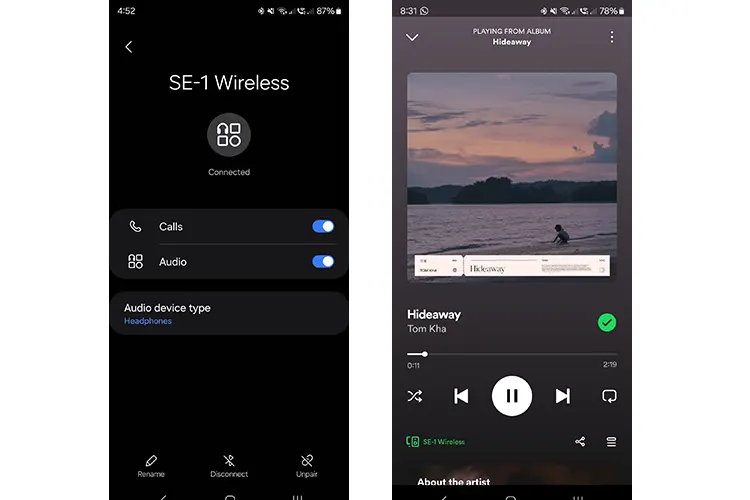Sound Impressions
The following sound impressions were compiled primarily in wireless mode using both an iPhone 14 with iOS 17.1.2 and a Samsung S23 Ultra with Android 14. The wired impressions were completed using both a FiiO K9 Pro ESS and a Rupert Neve Designs RNHP amplifier.
Summary
The Sineaptic SE-1 is a clean, clear, and articulate-sounding wireless headphone. It has a V-shaped response curve with excellent treble extension and a noticeable but softish mid-bass bump for some additional warmth in wireless mode. That bump gets a lot tighter and more defined in wired mode.
The V-shaped sound signature can be both a blessing and a curse, however. It is tailor-made for modern ‘lounge EDM’ and some classical works where there is less of a vocal presence and a stronger ambient ‘wispy quality’ to many a track.
That wireless sub-to-mid-bass hump adds some welcome fulness though its slam is not that physical and well separated from the midrange. This is more about creating more body on the lows to counter those ethereal highs which is where the SE-1 is at its strongest.
The ‘curse’ if you could call it that, is a relatively thin-sounding midrange with a bit of treble bleed coming into the upper mids and some vocal mixes that tip the coloration to the bright side.
Some vocal sibilance and percussion splashiness can dominate on high-energy rock tracks but to be fair, on warmer gentler recordings the precision and quick-fire transients of the SE-1 are more convincing compared to something like the warmer, denser Drop + THX Panda.
Those looking for vocal immediacy or a firm and full-bodied midrange instrumental performance will find the SE-1 lacking. However, for more delicate arrangements with a lot of headroom, the imaging and the ability to tease out delicate micro-details make the SE-1 an interesting proposition.
Frequency Response
The SE-1 is V-shaped both in measurements and in subjective listening. You get a bump from 30Hz to around 100hz then a very flat linear tuning to around 800Hz -1k where there seems to be a gentle rise for some vocal and instrumental pitching presence.
The 1-5k region is south of neutral though to be fair the clean ethereal quality to the notes, thin as they are, remains quite clear so vocal performances, when not drowned out by the highs can still resonate well in terms of perceived presence.
That treble sparkle comes from a strong lift in the treble curve from 6k to 10k and possibly beyond. In terms of dB amplitude, it does arch over the counter bass bloom by around 8-10 dB and you can hear that treble or upper order harmonics influence in the upper mids of the SE-1, especially on higher pitching vocals and percussion hits.
Timbre
The SE-1 delivers a fairly high level of tonal contrast with notes offering a generally light level of sustain. There is more presence on the attack with a short level of decay in most aspects save for the 20-100Hz region in the wireless mode which has a fair bit of bloom.
The net result is a strong sense of pace and articulation but not a huge amount of natural richness in both vocals and instruments. In a way, this does remind me of some of the classic electrostatic performances that placed a premium on ‘keeping pace’ with resolving complexity in some audio recordings.
In wireless mode, the bass coloration and definition are a bit soft sounding which for some might appeal in terms of the generated warmth to counter the highs. In wired mode, this gets a lot tighter and snappier.
However, if you feed the SE-1 lows too much power from 3rd party amp in AUIX mode it can distort the bass performance which is where the more regulated environment of the internal amplifier might be more suitable.
The treble is a high energy, articulate, and at times dominant tonal presence, especially through the upper-mids where the timbre is on the cool and clean side. Strong percussion energy levels will deliver a hard-edged but snappy quality with very little softness though those who like speed and clarity will appreciate its impressive nimbleness.
Staging & Dynamics
Compared to the likes of the HIFIMAN Deva Pro and the Drop + THX Panda the SE-1 sounds more expansive though when pitched against higher-end open-backs such as the Ananda BT it’s not quite as convincing.
The depth and width are decent with EDM and R’n’B though the dipped mids give it a relatively hollow sound and more distant staging quality with vocal imaging either neutral or slightly south of neutral depending on where they pitch.
Sub-to-mid bass and highs are more forward with the wireless mode lows more voluptuous overall. Highs though tend to dominate and sound the more forward of the two and this is where your ear is pulled towards for most of your listening.
The SE-1 has tons of sparkle and excellent treble articulation which does help prevent the dipped mids from sounding congested despite their lack of solidity and forwardness.
However, the staging can lack a solid fundamental on non-bassy or classic rock tracks robbing lower-mid instruments of any sense of gravitas or weight.
Wireless Performance
The following wireless performance impressions were created using both an iPhone 14 with iOS 17.1.2 and a Samsung S23 Ultra with Android 14.
Pairing
There is no rocket science behind the SE-1 pairing process. Like most BT headphones you simply hold the power button down for a few seconds to initiate the pairing mode. You can double-check if initiated via the LED light system on the cup which should flash green and white.
Pairing the SE-1 with either the iPhone or S23 Ultra was a very straightforward process with a single product label showing up in both of the phones’ BT scanning results, (SE-1 Wireless). You can pair with more than one transmitter with both the iPhone and the S23 connected at the same time.
I find that especially useful for the likes of Spotify which allows you to sync playback from one phone to another and then to the SE-1. In case one phone runs out of battery or has signal issues you just switch to the other and the SE-1 will pick up the slack with no issues.
Signal Stability & Range
The SE-1 has an excellent level of stability for longer BT transmission ranges. On par with the HIFIMAN Ananda BT using the Samsung S23 Ultra as the tested transmitter.
I was able to take it to the very extreme end of the office which included 2 walls and roughly 15-20 meters without any stutter or signal drop out. This was on par with the HIFIMAN Ananda BT and better than the HIFIMAN Bluemini R2R attached to the Deva Pro as well as the Drop + THX Panda using the same smartphone.
Both of these competing headphones displayed signal drop out about 1-2 meters before hitting the SE-1 distance. It is possible the SE-1 could have more distance in its range but the limits of the office space prevented me from going further.
Latency
I tested the SE-1 on both mobile and PC and found the latency levels relatively good for mobile but requiring a 0.2s hasten sync on VLC when connected to a Windows laptop.
Both the Samsung S23 Ultra and iPhone 14 would be classed as acceptable for casual media consumption such as video, YouTube, and Netflix. It is not super tight on the sync, just a slight bit of looseness but not so much that you would notice any poor lip-synching.
With VLC, on Windows, I did notice it get tighter on syncing with the latency adjustment but much like the mobile experience casual locally stored media files could be played without a sync if required. Lag, however, was more noticeable on Windows 10 when using Netflix via a Chrome browser.






